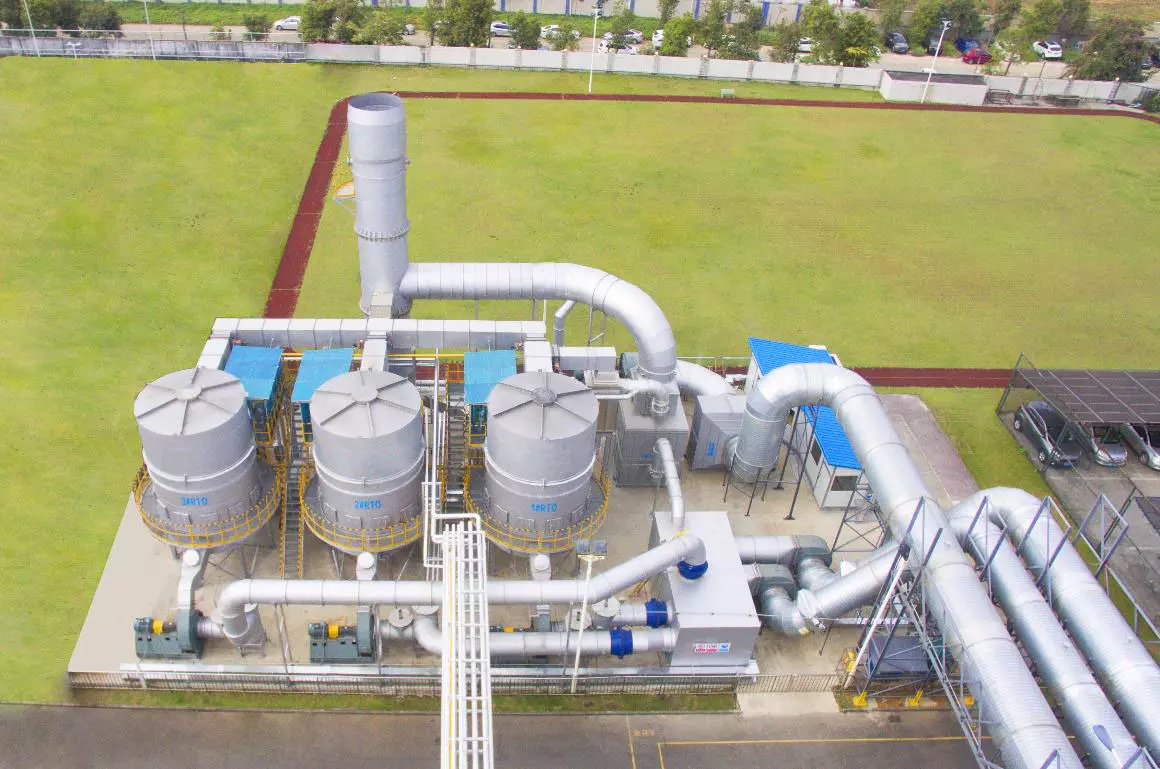How to Perform a Thermal Efficiency Test on an RTO Thermal Oxidizer?
A Regenerative Thermal Oxidizer (RTO) is an air pollution control technology used to eliminate hazardous pollutants from industrial exhaust streams. Thermal efficiency testing for RTOs helps to ensure that they operate at their maximum efficiency level, which in turn reduces operating costs and improves environmental compliance. In this article, we will discuss how to perform a thermal efficiency test on an RTO thermal oxidizer.
Understanding RTO Thermal Oxidizers
- RTOs are used in various industries, including chemical, pharmaceutical, and food & beverage.
- They use high temperatures to oxidize hazardous pollutants from exhaust streams before releasing them into the atmosphere.
- The RTO熱氧化器
operates as a heat exchanger, where hot exhaust gases from the process are passed through ceramic media, which gets heated, and then the clean air is released into the atmosphere. - To ensure optimal performance, RTOs must be regularly tested for thermal efficiency.
Preparing for the Thermal Efficiency Test
Before starting the thermal efficiency test, it is essential to prepare the RTO thermal oxidizer according to the following steps:
- Isolate the RTO from the process and let it stabilize for at least 24 hours.
- Ensure all valves are in the correct position.
- Confirm that all thermocouples and pressure transmitters are operational.
- Ensure that you have all the necessary equipment, including a data acquisition system and a temperature calibration source.
Executing the Thermal Efficiency Test
The thermal efficiency test for an RTO thermal oxidizer involves the following steps:
- Record the temperatures and pressures in the RTO during the test period.
- Calculate the RTO’s inlet and outlet gas flow rates, as well as the heat input to the RTO.
- Calculate the heat recovered by the RTO.
- Calculate the RTO’s thermal efficiency using the heat input and heat recovered values.
It is essential to perform the thermal efficiency test at different loads and compare the results with the design specifications. If the results show that the RTO is operating below its expected efficiency level, adjustments can be made to improve performance.
Interpreting the Results
Once the thermal efficiency test is complete, the data collected must be analyzed to determine if the RTO thermal oxidizer is operating at its maximum efficiency level. A thermal efficiency of 95% or higher indicates optimal performance. If the RTO thermal oxidizer is not operating at an optimal level, adjustments should be made to improve performance.
The following factors can impact the RTO’s thermal efficiency:
- The RTO’s inlet concentration and temperature
- The RTO’s media’s condition and age
- The RTO’s valve’s condition and operation
- The RTO’s control system’s calibration and operation
Therefore, it is essential to perform regular thermal efficiency tests to identify any potential issues and make the necessary adjustments to achieve optimal performance.

結論
Thermal efficiency testing is critical for maintaining optimal performance of RTO thermal oxidizers. It helps to ensure that they operate efficiently, reduce operating costs, and comply with environmental regulations. Monitoring and analyzing the test data regularly can help identify any potential issues and make the necessary adjustments to improve performance. If you need assistance with thermal efficiency testing, contact a qualified RTO service provider for support.
Performing a Thermal Efficiency Test on an RTO Thermal Oxidizer
Our company is a high-end equipment manufacturer specializing in the comprehensive treatment of volatile organic compounds (VOCs) in exhaust gas and carbon reduction and energy-saving technologies. We have four core technologies in thermal energy, combustion, sealing, and automatic control, with the ability to simulate temperature fields and airflow fields, model calculations, ceramic heat storage material performance, molecular sieve adsorption material comparison, and VOCs organic matter high-temperature incineration and oxidation characteristics testing.
Our R&D center for RTO technology and exhaust gas carbon reduction engineering technology center are located in Xi’an, with a 30,000 square meter production base in Yangling, making us the world’s leading manufacturer of RTO equipment and molecular sieve wheel equipment. Our core technology team comes from the Aerospace Liquid Rocket Engine Research Institute (Aerospace Sixth Academy). We have more than 360 employees, including more than 60 R&D technical backbones, including 3 research-level senior engineers, 6 senior engineers, and 144 thermodynamics Ph.D.
Our core products are the rotary valve-type heat storage oxidation incinerator (RTO) and molecular sieve adsorption and concentration wheel. Combining our own expertise in environmental protection and thermal energy system engineering technology, we can provide customers with comprehensive solutions for industrial waste gas treatment and thermal energy utilization carbon reduction.
Our company has obtained various certifications and qualifications, including Intellectual Property Management System Certification, Quality Management System Certification, Environmental Management System Certification, Construction Industry Enterprise Qualification, High-tech Enterprise, Rotary Heat Storage Oxidation Furnace Rotary Valve Patent, Rotor-type Heat Storage Incineration Equipment Patent, Disc-type Molecular Sieve Wheel Patent, etc.

When selecting the appropriate RTO equipment, there are several factors to consider:
- Determine waste gas characteristics
- 了解當地法規和排放標準
- 評估能源效率
- 考慮維
- 預算和成本分析
- Choose the appropriate type of RTO
- 考慮環境和安全因素
- 效能測試與驗證
It is important to explain each of these factors in detail to ensure that the appropriate RTO equipment is selected.

Our service process includes:
- Consultation and evaluation: Preliminary consultation, site inspection, and needs analysis
- Design and plan development: Plan design, simulation and modeling, and plan review
- Production and manufacturing: Customized production, quality control, and factory testing
- Installation and commissioning: On-site installation, commissioning and operation, and training services
- After-sales support: Regular maintenance, technical support, and spare parts supply
We are a one-stop solution with a professional team that tailors RTO solutions to customers’ needs.
作者:米婭
